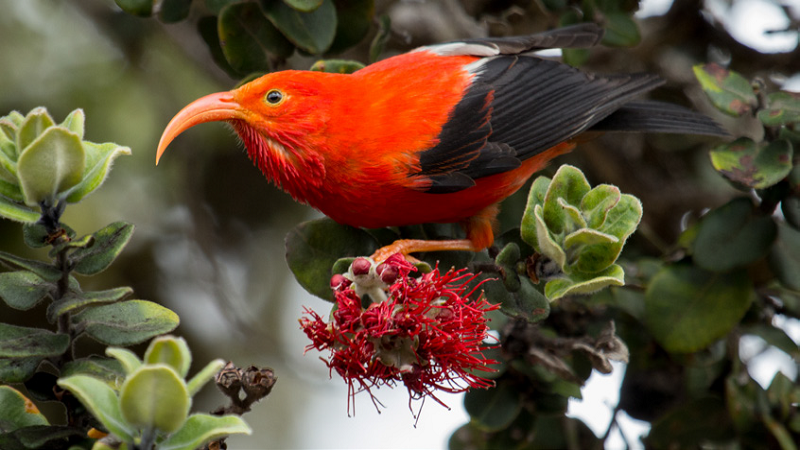U.S. Interior Secretary Deb Haaland recently announced a multi-agency effort to protect Hawaii forest birds.
The multi-agency strategy is seeking to prevent the extinction of Hawaiian forest birds endangered by mosquito-born avian malaria, according to a Dec. 15 news release. The strategy includes more than $14 million in funding.
"Hawai’i is an incredible ecosystem, but right now some bird populations are facing a threat that could push them to extinction," Haaland wrote in a Dec. 19 post on Twitter. "@POTUS’ Bipartisan Infrastructure Law is putting resources in place to combat those threats and protect the balance of nature."
“Hawaiʻi’s forest birds are facing an extinction crisis, in part because rising temperatures caused by climate change have enabled mosquitoes to reach high-elevation areas that were once sanctuaries for these birds,” Assistant Secretary for Fish and Wildlife and Parks Shannon Estenoz said in the release. “Through the Bipartisan Infrastructure Law and other investments, we can help protect and conserve these species through a coordinated strategy that considers Hawai‘i’s unique ecosystems and the islands’ natural and cultural heritage.”
The multi-agency strategy, outlined by the U.S. Fish and Wildlife Service, highlights five objectives to prevent the extinction of Hawaiian forest birds through the implementation of conservation strategies, integration of Native Hawaiian biocultural knowledge and practices and the development of new technologies.
According to the strategy, the objectives are to develop and deploy Insect Incompatibility Technique to reduce the mosquito vector of avian malaria by 2026, establish captive care programs for bird species most at risk of imminent extinction by 2026, identify species that are appropriate for translocation and implement translocations to higher elevation refugia on Hawai'i Island by 2030, develop and deploy next-generation tools by 2032 and develop and implement conservation strategies informed with Native Hawaiian biocultural knowledge and deployed with appropriate protocols and cultural practices.
The National Parks Service names several of these forest birds, like the ‘I‘iwi (Drepanis coccinea); Kiwikiu (Maui Parrotbill) (Pseudonestor xanthophrys); and Ākohekohe (Palmeria dolei).






